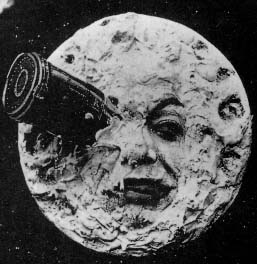
This February’s movie sales were dismal. Box Office Mojo has more:
In February, movie theaters racked up nearly $660 million in sales, dipping close to 13 percent from February 2010’s $755 million haul. It was the lowest-grossing February since 2007, and it was the largest February-to-February slip since 1995.
With overall attendance optimistically estimated at 82 million, February 2011 was the least trafficked February since 1995, and it trailed 1996-2010 by significant margins. The low attendance was a result of having no momentum from a relatively weaker January as well as a largely unexciting slate of new movies.
Right, and the fact that a normal (non-matinee) movie now costs $10.50+, depending on where you live, and that non-3D movies are now “at select theaters”. “A survey conducted by the American Association of Retired People show that 40% of seniors no longer attend films because they can no longer afford the prices,” according to Wisegeek. “A sixteen year old making minimum wage must work nearly four hours to afford seeing a film and purchasing concession items.”
That’s not to mention that cheap flatscreen TVs and on-demand technology like Netflix and Hurawatch have made home movie watching much more appealing than it once was. Or the fact that concessions, like movies, keep getting dearer.
Do movies have to keep getting more expensive, or is it a matter of a bunch of greedy movie execs hosing film lovers? Here are some of the factors at work:
* Government ethanol subsidies are driving up the supply of fuel corn while driving down the supply of food corn. That, in turn, makes popcorn at the concession stand more pricey.
* A growing demand for 3-D movies, which are expensive to make, has driven up movie ticket prices by 33% per movie (for animated 3D films) in order to cover production costs. Blockbuster successes like James Cameron’s Avatar seem to have convinced movie executives that audiences want to watch more 3-D movies, and that they’re willing to pay. (The net result so far is that viewership is down; we’ll see if said execs have learned the flaws in their strategy).
* Film studios are fighting for more profits because of the sizable dent piracy has made in the industry.
* Rising commodities prices–fuel, for example–mean it costs more to regulate the temperature of a movie theater, not to mention transport all of the concessions there.
* Because of upgraded seating and equipment, movie theaters are more expensive to run and maintain than during the halcyon days of five-cent popcorn. Then again, they didn’t play obnoxious ads during those days, so who knows what the net cost actually is.
* Some say the Screen Actors’ Guild and other industry components are corrupt, so there’s money falling through the seams there. That said, aren’t movie stars getting paid a bit much, too?
With rising prices, movie studio and theater execs need to offer people incentive to go to movies, not reason to avoid them.












More Stories
How to Use Leverage in Bonds CFD Trading Effectively
The E-commerce Business Boom: What You Need to Know
Pros and Cons of Starting a Dropshipping Business